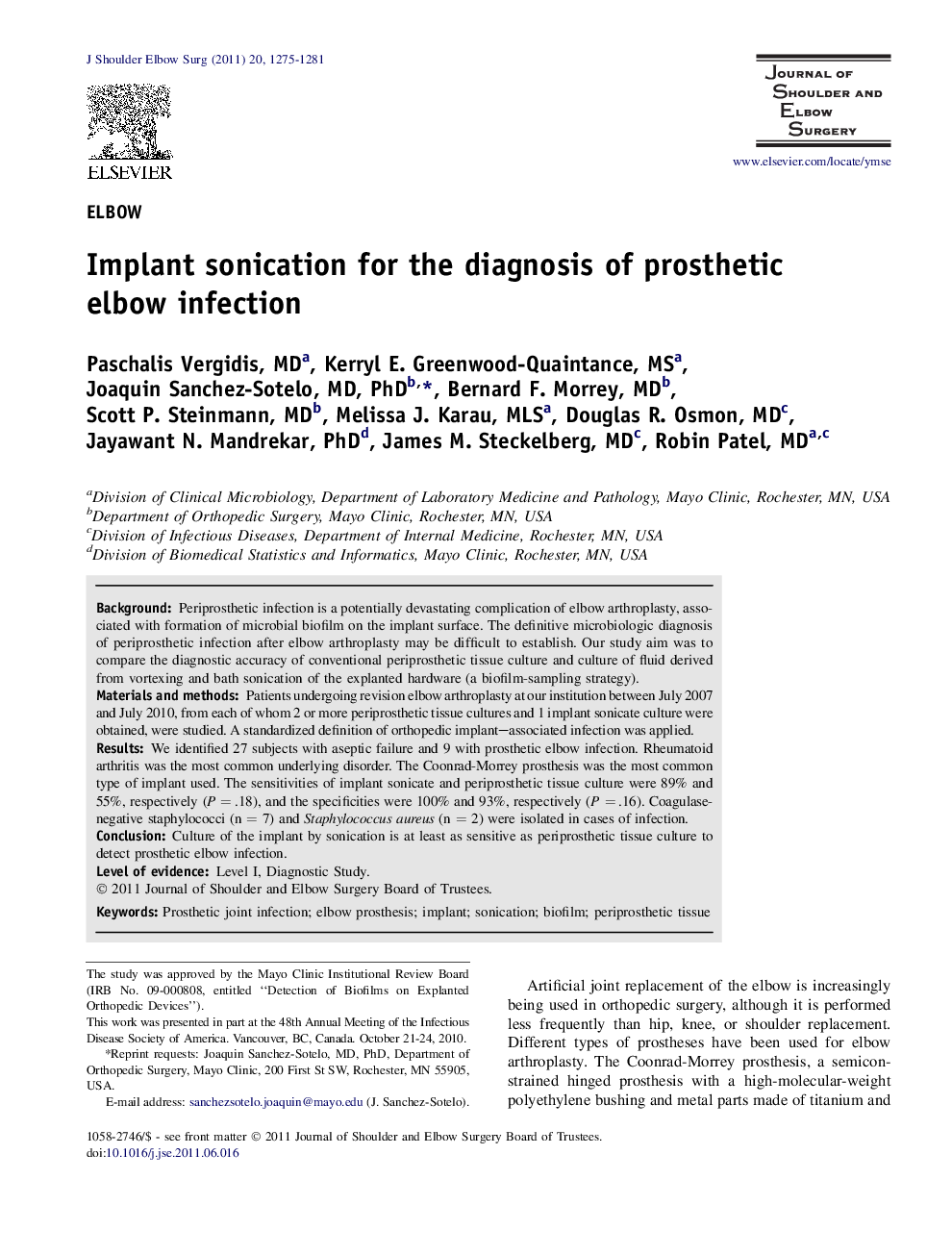| Article ID | Journal | Published Year | Pages | File Type |
|---|---|---|---|---|
| 4075677 | Journal of Shoulder and Elbow Surgery | 2011 | 7 Pages |
BackgroundPeriprosthetic infection is a potentially devastating complication of elbow arthroplasty, associated with formation of microbial biofilm on the implant surface. The definitive microbiologic diagnosis of periprosthetic infection after elbow arthroplasty may be difficult to establish. Our study aim was to compare the diagnostic accuracy of conventional periprosthetic tissue culture and culture of fluid derived from vortexing and bath sonication of the explanted hardware (a biofilm-sampling strategy).Materials and methodsPatients undergoing revision elbow arthroplasty at our institution between July 2007 and July 2010, from each of whom 2 or more periprosthetic tissue cultures and 1 implant sonicate culture were obtained, were studied. A standardized definition of orthopedic implant–associated infection was applied.ResultsWe identified 27 subjects with aseptic failure and 9 with prosthetic elbow infection. Rheumatoid arthritis was the most common underlying disorder. The Coonrad-Morrey prosthesis was the most common type of implant used. The sensitivities of implant sonicate and periprosthetic tissue culture were 89% and 55%, respectively (P = .18), and the specificities were 100% and 93%, respectively (P = .16). Coagulase-negative staphylococci (n = 7) and Staphylococcus aureus (n = 2) were isolated in cases of infection.ConclusionCulture of the implant by sonication is at least as sensitive as periprosthetic tissue culture to detect prosthetic elbow infection.
